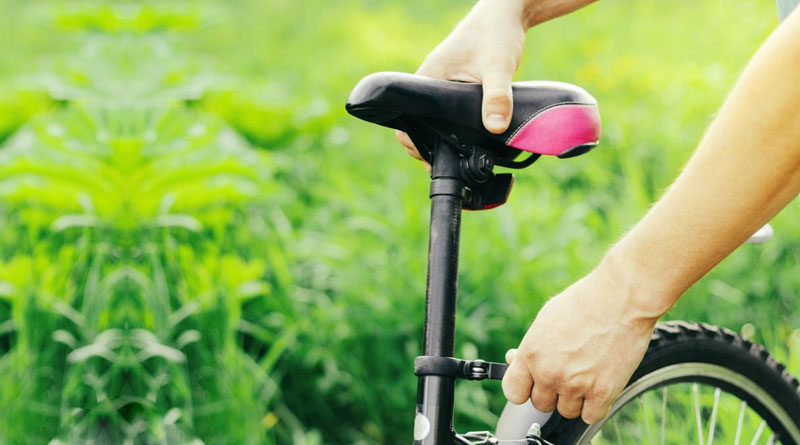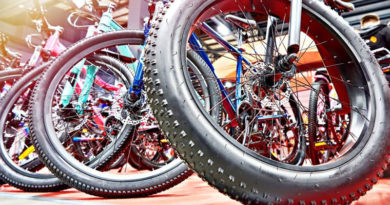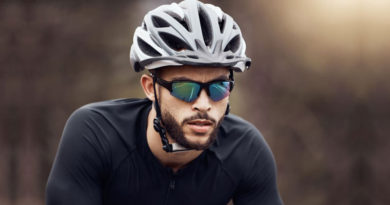Mountain vs. Road Bike Seat: A Height Comparison
Seat height is the most important position when riding a bike. There seems to be a lot of debate and confusion among riders about what the correct seat height should be. It is common to see many beginner and intermediate riders riding with an incorrect seat height. Changing the height of the seat alters the angles of the hips, knees, and ankles and how they work together. These angles dictate your muscle activation and the power output at different positions during a pedal stroke. An incorrect seat height negatively affects your performance while riding. It can also cause some long-term problems like ankle, knee, hip, or back pain. It is important to have a correct seat height.
The following article compares the seat height of a mountain and a road bike.
What are the differences between mountain and road bike seat height?
As a general rule, road bikes have a higher seat height while mountain bikes have a lower seat height. Both provide benefits most suitable to their respective riding styles. However, we also have to be mindful of the different subcategories of mountain biking which are as follows:
- Cross country (XC)
- Enduro
- Trail
- Gravity/Downhill
- Freeriding
Some of these categories use the same seat height as a traditional road bike. While others are terrain dependent and may use a seat height an inch above a road bike’s or several inches lower. XC, for example, uses the same seat height as a road bike most of the time.
The seat height of enduro, trail riding, and free riding is highly terrain dependent. Less technical trails use a higher seat height while more technical terrains use a lower seat height. It is a good idea to use a dropper post for these disciplines. Otherwise, you would have to raise your seat height when going uphill and then manually lower it when coming down. Manually altering your seat height every time going up and downhill can be tedious.
Dropper Posts for MTBs
Dropper posts have existed since the 80s. But they have always been unreliable until recently. Newer dropper posts perform much better and are much more reliable. They allow you to adjust your bike’s seat height on the go with the press of a button. A dropper post is very useful for trails with frequent uphill and downhill riding or long, straight stretches with pedaling involved. You don’t have to get off your bike every time and manually raise or drop your seat.
Most newer MTBs come fitted with dropper posts now. Entry-level MTBs like the Cannondale Trail 8, however, do not come with dropper posts. Similarly, you won’t find dropper posts on older MTBs as well, at least not in the stock configuration. Make sure what diameter and length of the dropper post will be compatible with your bike before buying.
A good place to start for beginners and riders on a budget is the PNW Loam and the OneUp Components V2. Both of these dropper posts are among the best value dropper posts you can get. The OneUp Components V2 offers the most variation in length from 70mm to 240mm. The PNW Loam doesn’t provide that many length options. But the Loam uses an air cartridge that can be tuned to adjust the post’s return rate. You can tune it to be slow or fast. The accent rings on the Loam can also be changed to match the color of your bike or accessories making it aesthetically more pleasing.
If you want a more intermediate option or if you are looking to upgrade, then, the Fox Transfer dropper post is the best option. It is used all over the world for racing because of its proven performance and reliability. Fox Transfer has a Factory version that has Kashima-coated aluminum providing better protection to the metal and the color looks great. The Performance Elite version is the same as the Factory version but it has an all-black anodized aluminum upper which makes it cheaper.
But if budget is not a problem and you are really looking to make your life much easier, then consider the RockShox Reverb ASX. ASX is SRAM’s division under which all the electronic components from SRAM and RockShox live. The RockShox Reverb ASX is wireless. It is extremely easy to install and gives the bike a cleaner look with no wires.
A neat feature of the Reverb is that its hydraulic actuation has a Vent Valve. The post develops a squish after some time of use because of air bubbles that develop inside the fluid. The Vent Valve is used to get rid of the air and service the dropper post. You don’t have to take the post out or take the seat off which cuts down significant time on maintenance.
The Reverb can be coupled with the SRAM Eagle ASX wireless rear derailleur to make your bike really clean and cut down the time on maintenance. Both the components are wireless and use interchangeable batteries so you can swap the battery of one with the other if it’s running low. The remotes come with the box for both and can be configured from the AXS smartphone app. The app also provides other useful information.
However, this complete wireless package will cost you a lung and a kidney because it is expensive as hell! But it is worth every penny. You wouldn’t have to worry about checking the cables again on these components. Just make sure that the battery remains charged.
Gravity riding bikes have a lower seat height and gravity bikes come with a fixed seat. Gravity-assisted, downhill rides like in a park or a resort don’t require much pedaling. Besides, riders coming downhill don’t sit down anyway.
Dropper Posts for Road bikes
Dropper posts were also slowly proliferating in the road bike category. They make it easier to put your feet down when you come to a halt. Just drop the seat height and sit comfortably until it’s time to go again. But one event really boosted the demand for dropper posts in road bikes.
In 2022, Slovenian rider Matej Mohoric won the Milan-San Reno. Guess what he was using…yes, he was using a dropper post. A Fox Transfer SL to be precise. Apparently, a dropper post on a road bike allows the rider to sort of super tuck without having to super tuck.
The super tuck is banned by UCI because it is dangerous. You don’t have much control because the weight shifts to the front wheel. It diminishes your ability to brake in an emergency. But by dropping the post, a rider can lower the body into a more aerodynamic position. The result is very close to what you would get with a super tuck.
Lowering the body with a dropper post also lowers the center of gravity of the bike. The bike becomes more maneuverable through corners. With your butt firmly planted on the seat, the weight distribution on the bike remains equal throughout. The result is more maneuverability, stability, and control when cornering at high speeds.
With these new revelations, the demand for dropper posts on road bikes has suddenly gone up. Comfort and performance are attractive factors. However, road bikes with aerodynamic seat posts are incompatible with round seat posts that all dropper posts have. But with increasing demand and an emerging market, this limitation would soon be overcome by the manufacturers.
Why use a higher seat height on a bike?
A higher seat is used in situations where high paddling output is required. Any riding style that requires you to paddle for longer periods should have a higher seat height. More pedaling is usually required on smooth surfaces like roads or when riding uphill or gradual declines on wide, non-technical, single, or double tracks. The highest possible seat height in such situations provides the most power and efficiency.
A higher seat height is also more aerodynamic. Above 13mph, air resistance becomes the major opposing force on a bike. Even an average rider can easily reach speeds of 18 to 22mph. Therefore, on smooth surfaces, aerodynamics takes precedence. The tucked-down body position – the rider is forced into – allows the bike to pass through the air with less resistance. Another benefit of a higher seat height is that it raises the center of gravity of the bike with a heavier body weight at a height.
A heavier weight at a height has more rolling resistance and is more difficult to topple during constant motion when connected to the base. That is why it is common to see off-road motorcyclists and bikers stand up when riding through bumps or rough terrain. Raising the center of gravity of their bodies helps them stay upright. While off-road riders need to stand up, riders raise their seat height on non-technical or less technical terrains. The increased seat height allows them to remain comfortably seated during long rides.
But do keep in mind that physics works both ways. With a higher seat height, the bike becomes difficult to lean and quickly shift sides. This disadvantage is most evident if you try to ride bumpy, off-road terrain with a higher seat height where instantaneous direction change is often required. But I think I am not doing justice when explaining this topic. In fact, I think I am making this topic sound even more confusing. For a clear visual elaboration on this topic, watch this short video by Youtuber FortNine.
Why use a lower seat height on a bike?
A lower seat height provides more control and maneuverability. Maneuverability is important when you are off-road because there’s no telling what might surprise you on the trail. With a lower seat height, the center of gravity of the bike is lowered which makes it easier to maneuver. With a low center of gravity, the bike remains more stable when leaned and can easily and quickly be shifted from one side to the other.
The main benefit of a lower seat is that it allows you to manage the center of gravity of the bike better. You can move your body back and forth to alter the center of gravity of the bike without the seat getting in the way. Being able to move on technical trails is crucial to retain control over the bike. You would have trouble with a higher seat as it is difficult to move the body with a higher center of gravity as mentioned above. With a high center of gravity, the bike is difficult to bring back up once it is leaned which compromises maneuverability.
Another benefit of having a lower seat is that it allows you to lift the front wheel more easily even at lower speeds. By bringing your body weight closer to the rear wheel, the whole bike becomes a second-class lever. You may need to revisit elementary school physics to understand that. But the point is, you can lift the front wheel of the bike easily to climb or jump over logs or boulders, etc.
A lower seat height is also necessary to avoid pain on bumpy terrain where maneuverability is required. A higher seat can hit you in the crotch or the thigh when moving back and forth to maneuver. That is especially painful for men. If you are seated, the seat would smack your butt on bumps, and that’s painful for everybody.
What happens if the bike seat is too high or too low?
Improper seat height negatively affects performance. The pedaling is inefficient with compromised power transfer to the pedals. Riding for longer periods with an improper seat height can cause ankle, knee, and back pain. There are three types of height on a bike:
- Too high
- Too low
- Optimal
A seat height too high causes posterior knee pain because of the over-extension of the knee at the bottom stroke. The quadriceps are overstretched and are no longer able to stabilize the patella. Although a higher seat height allows more muscle activation the muscles are stretched beyond their optimal range. A seat too high also causes the hips to rock back and forth against the saddle causing chafing. A knee bending less than 25° is over-extending and you would develop posterior knee pain.
A seat height too low causes anterior knee pain because of the increased compression of the knee at the top stroke. There is also increased strain on the hamstrings which can make your butt hurt. Stay on the seat longer and you will start worrying if you even have a butt anymore or if it fell off. A bent knee angle greater than 44° means that your knee is experiencing too much compression.
Theocratically, the optimal seat height on a road bike should have a 25° knee angle. Similarly, on a mountain bike, the seat height should have a knee angle of 30° when the pedal crank is at a 6’O clock position. These angles provide the best power delivery and injury prevention.
But theory can be different than what is practically possible. Hamstring flexibility is a major limiting factor in achieving optimal seat height. Usually, the preferred seat height among many riders gives a knee angle of somewhere around 33° to 35°.
A knee angle of 35° provides an ideal combination of pedal mechanics and power. But having a knee angle anywhere between 25° to 44° is fine to prevent knee injury. When adjusting the seat height, you should also factor in the pedal-shoe stack height and the crack length.
Final thoughts
The wrong seat height negatively affects your performance and can also give you back, knee, and ankle pain. A higher seat height is used for more pedaling output. It is suitable for riding styles that require a lot of pedaling like road, gravel, or uphill riding. Lower seat height is suitable for more control and maneuverability by lowering the center of gravity of the bike.
For riding styles where you would face multiple terrain types or frequent up and downhill riding, you should opt for a dropper post. Most modern MTBs come standard with a dropper post except for gravity bikes or entry-level MTBs. Dropper posts are also becoming popular on road bikes.
The hamstring is a major limiting factor in achieving the optimal seat height. Make sure to have a seat height that allows your knees to have an angle of 30° to 40°. Otherwise, you would develop anterior or posterior knee pain and other problems along with compromised power output.




